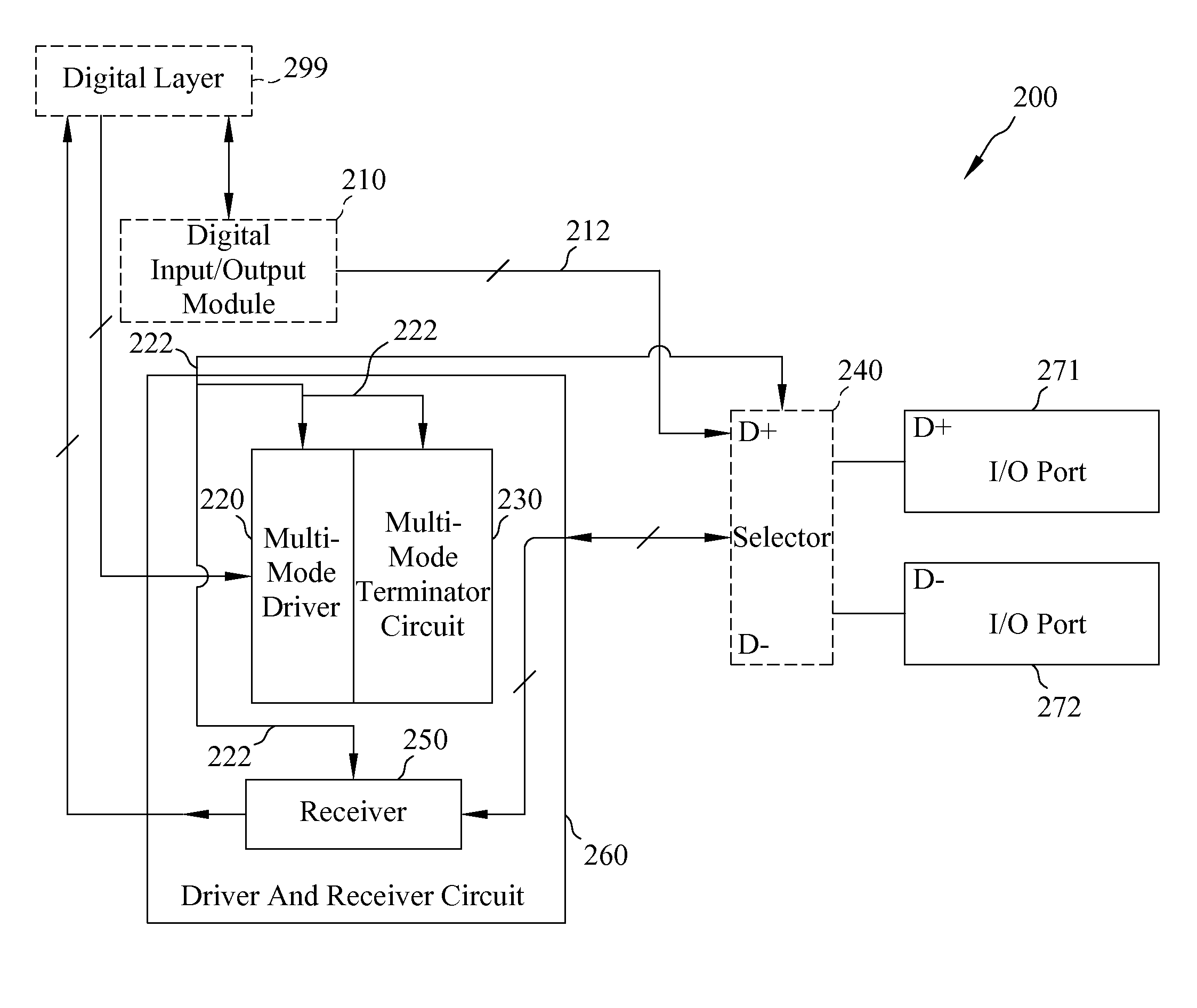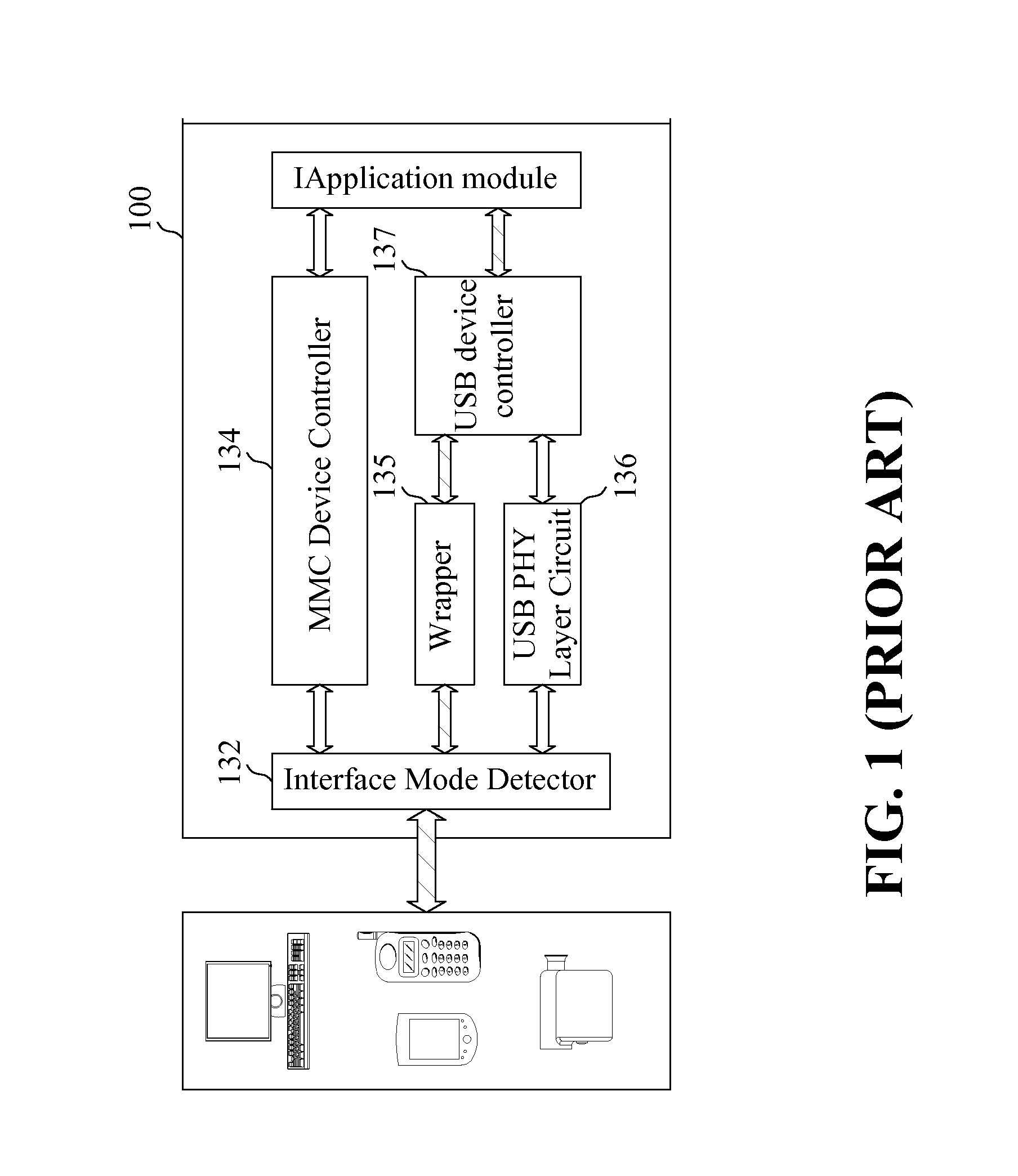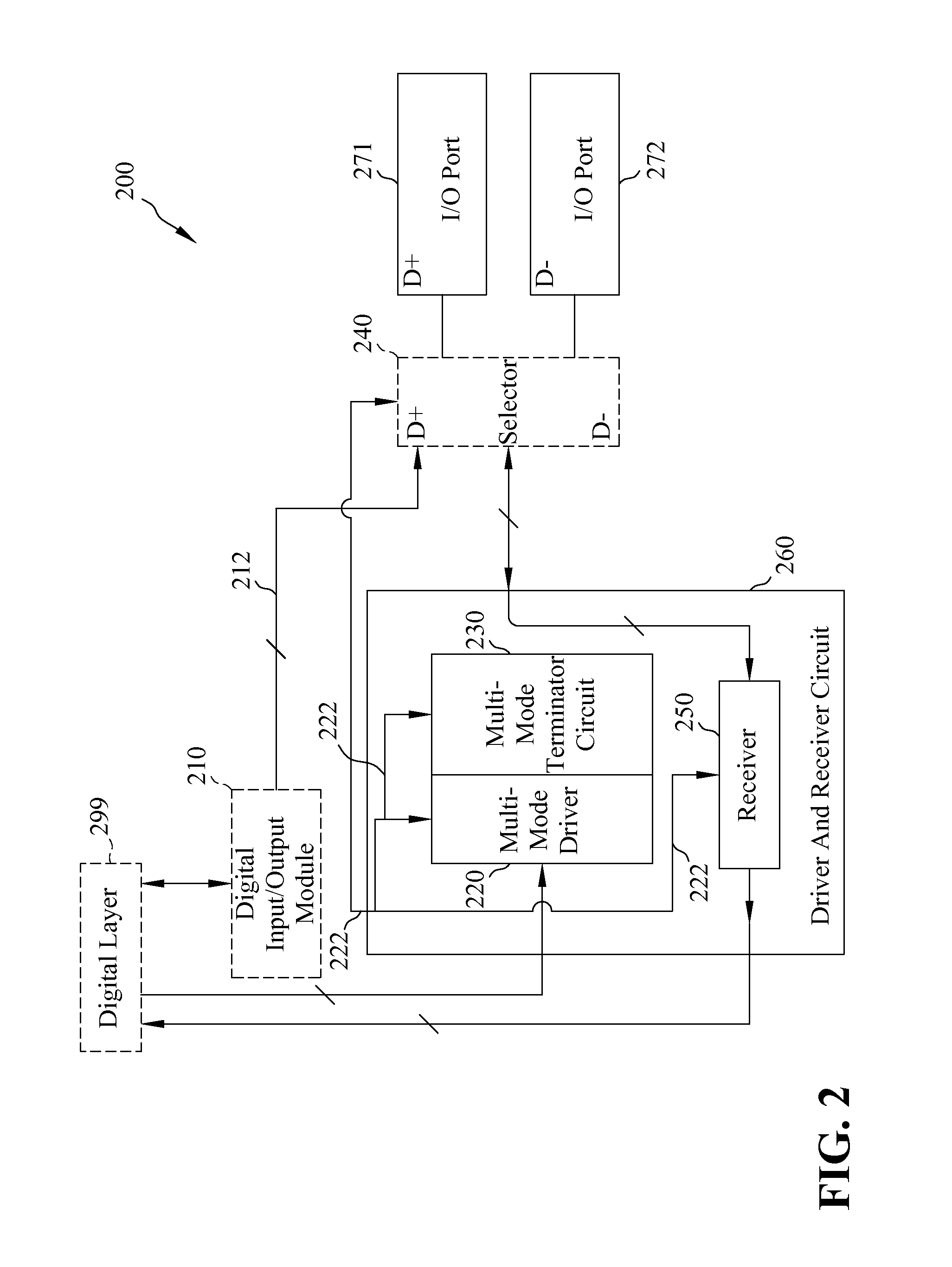Architecture of multi-power mode serial interface
- Summary
- Abstract
- Description
- Claims
- Application Information
AI Technical Summary
Benefits of technology
Problems solved by technology
Method used
Image
Examples
Embodiment Construction
The disclosed exemplary embodiments establish a serial interface architecture in USB applications, with configurable or programmable voltage or current source and terminator circuit, and is compatible with the original USB connector as well as applicable to the USB standard cable length in the application of removable devices. In the situation of the cable length of mobile device application, a low-power mode operation may be used to achieve the requirement of energy saving for mobile devices.
The serial interface architecture may operate in many scenarios, at least including, connection wire of different lengths or different data transfer rates between the USB host and the USB device, and configurable or programmable voltage or current source so that the power consumption of the USB host and the USB device is optimized.
FIG. 2 shows an exemplary schematic view of a serial interface architecture, consistent with certain disclosed embodiments. In FIG. 2, serial interface architecture 2...
PUM
 Login to View More
Login to View More Abstract
Description
Claims
Application Information
 Login to View More
Login to View More - R&D
- Intellectual Property
- Life Sciences
- Materials
- Tech Scout
- Unparalleled Data Quality
- Higher Quality Content
- 60% Fewer Hallucinations
Browse by: Latest US Patents, China's latest patents, Technical Efficacy Thesaurus, Application Domain, Technology Topic, Popular Technical Reports.
© 2025 PatSnap. All rights reserved.Legal|Privacy policy|Modern Slavery Act Transparency Statement|Sitemap|About US| Contact US: help@patsnap.com



